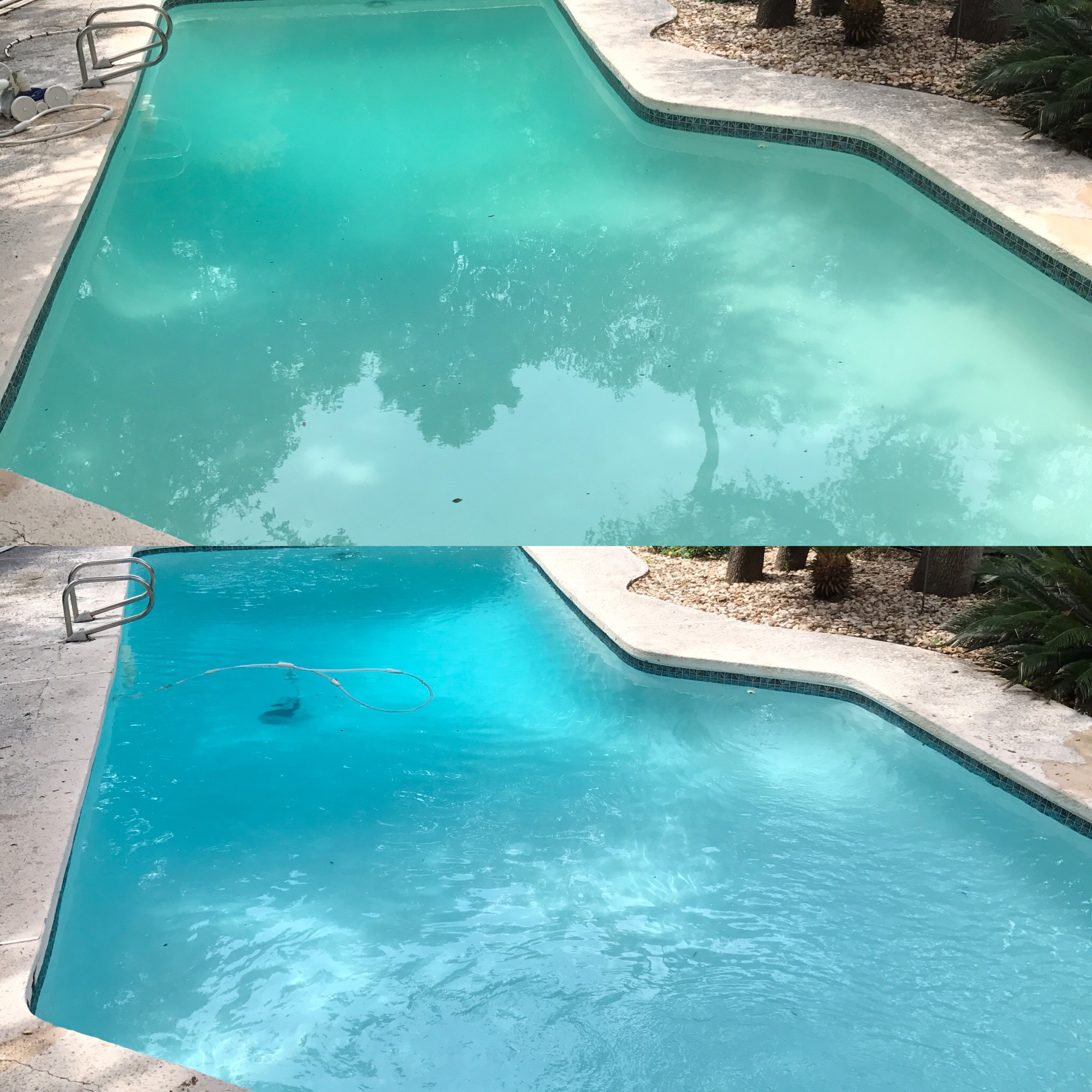90% of all the pools I test these days have CYA problems. In other words they have WAY TOO MUCH OF IT. But how did they get that way?
CYA is Cyanuric Acid. Also known as chlorine stabilizer. You need CYA in your pool or else you would lose chlorine so fast you wouldn't be able to keep up with it. You see, chlorine rapidly dissapates in sunlight. By using cyanuric acid in your pool, it binds to the free chlorine in your pool and releases it slowly so you don't lose so much chlorine every day.
In saltwater pools, you need about 70-80ppm of CYA and you have to add it manually. Look for it as Chlorine Stabilizer in your pool store or get some on Amazon for cheap here
. In a pool that uses regular sources of chlorine you need anywhere between 30-50ppm depending on how much sun and how hot your area is. Obviously people in places like Arizona need that on the higher end of CYA because the extreme heat and sun exposure.
CYA levels relate to how much Free Chlorine (FC) you need in your pool to keep it sanitzed and safe to swim without algae and other nasties from growing in your pool. (You can see how much your pool needs in the Pool Logger app, it calculates all of this for you) As the CYA levels increase, so does the amount of FC you need at a minimum. But as the CYA levels rise above the recommended levels, free chlorine starts to become less effective, so you need higher and higher levels of chlorine to keep the pool sanitzed and safe. Most chain pool stores and pool care companies don't take this in to account and you end up with a pool that you are constantly fighting to keep alage out of. They try to tell you that the problem is phospates or other nonsense. It is almost always high CYA and low FC!!
So how does the CYA get so high? Well, chlorine cannot be sold in a solid form unless something is bound to it. So the puck that most people use to chlorinate their pools are bound with cyanuric acid. So for every 10ppm of chlorine you add to your pool, you are adding 6ppm or more of CYA. CYA never leaves the pool unless there is dilution (i.e. - it rains like crazy and pool has to be drained down some) So, over time, the CYA levels keep going up, and up, and up.
A perfect example of this is my brother's new house. He bought a great house with an old pool. When he took possession of it, it was being maintained by a pool company for ~$150 a month. I am sure he figured that it was good to go when he moved in. I got there to help him move and the pool was a light shade of green and you couldn't see the bottom. I went to check out the equipment and it had an inline puck chlorinator set to the max. I tested the free chlorine in the pool and guess what. ZERO. No chlorine in the pool at all despite the chlorinator being turned to the max. I had to the bearer of bad news to his kids and tell them they couldn't swim for a little bit while I fixed things. Anyways, after I found out there was no chlorine in the pool I knew the CYA was going to be high but I had no idea that it was going to be as high as it was. I tested it using Taylor's test kit at around 400+ ppm of CYA. Their test kit only goes to 100 so I diluted the sample with tap water several times to arrive at that number. I have never seen one that high before!!
Speaking of tests kits, test strips won't work here. You need a good test kit. We recommend only using either the Taylor K-2006 Test Kit or the TF-100 Test kit
for accurate results. The Taylor Magnetic Speedstir
is also really helpful in getting fast accurate results.
Anyways, we had to drain most of the water in the pool to get the CYA back down to original levels and then SLAM (Shock, Level, and Maintain - more on that in another post) the pool to kill the algae. It took one week and almost 20 gallons of bleach to get it clear and algae free. See pic below for a before and after we were almost done.

So how do you keep this from happening?
2 options: Use liquid chlorine (AKA bleach) to sanitize your pool. It only adds chlorine and nothing else to your pool. Other sources like Trichlor, Dichlor and Cal-Hypo add CYA or Calcium which builds and builds until you have a problem. Option 2 is using a Salt Water Chlorine Generator. This can be a more expensive up front option but salt water cells are very cool in that your pool makes its own chlorine!
Regardless, this just boils down to education and that you should know what you are putting in your pool. Maintenance can be very easy the less crud you add to the pool. Keep it simple and the pool starts to take care of itself.